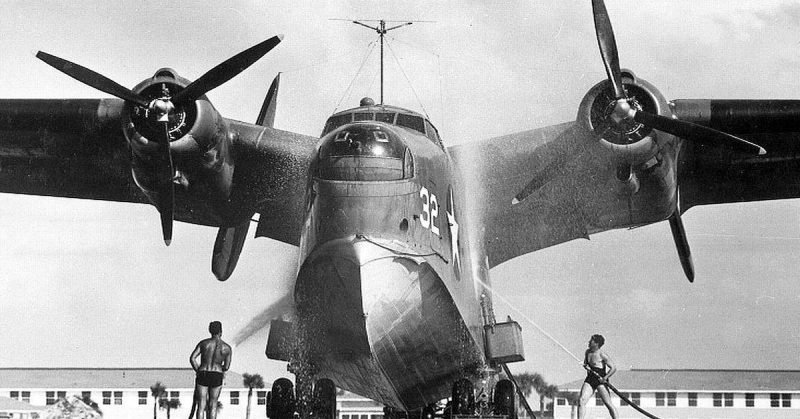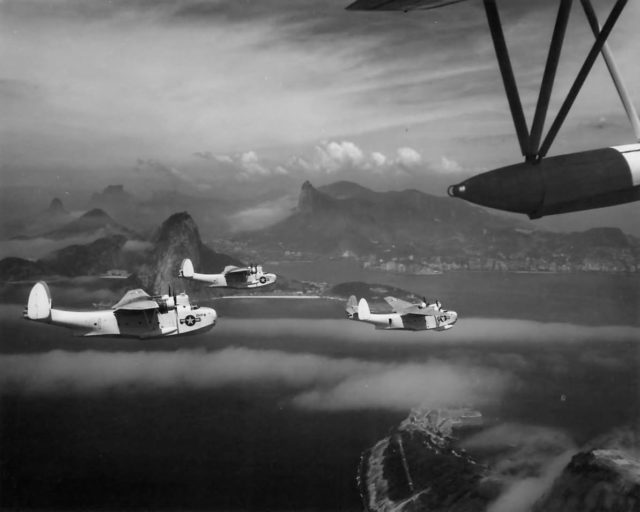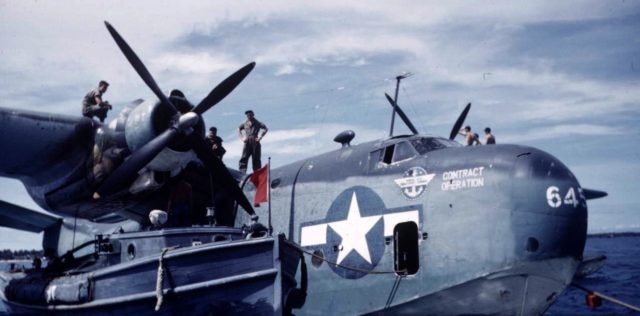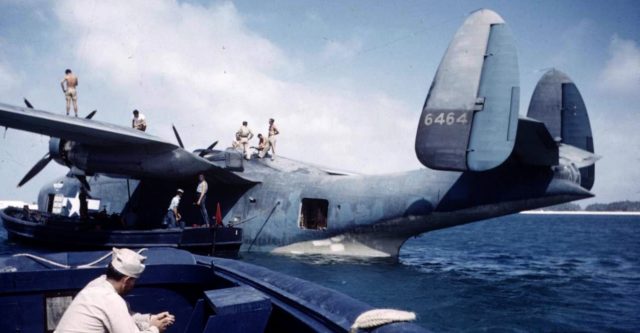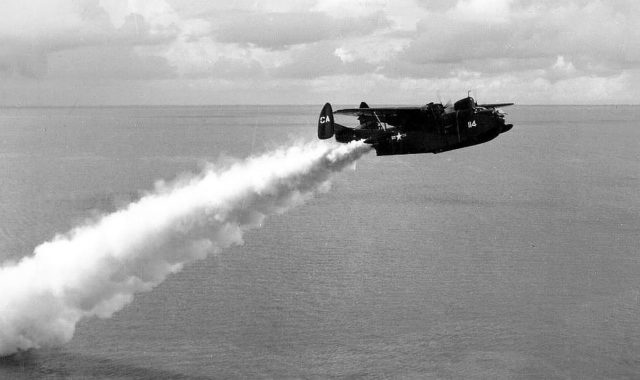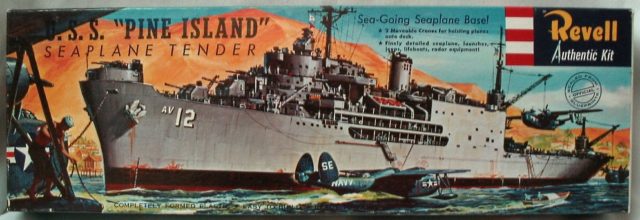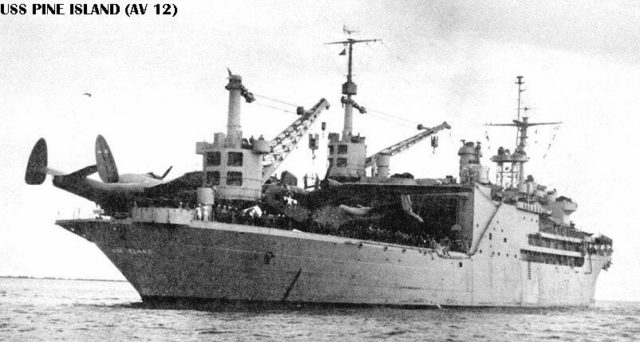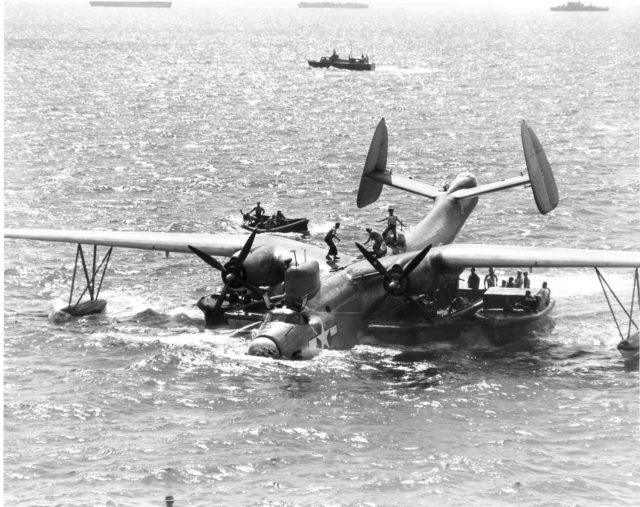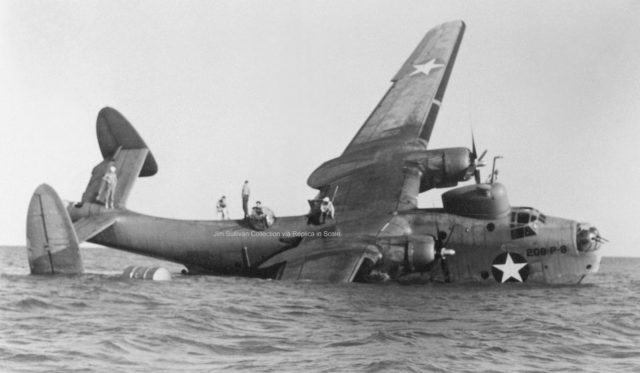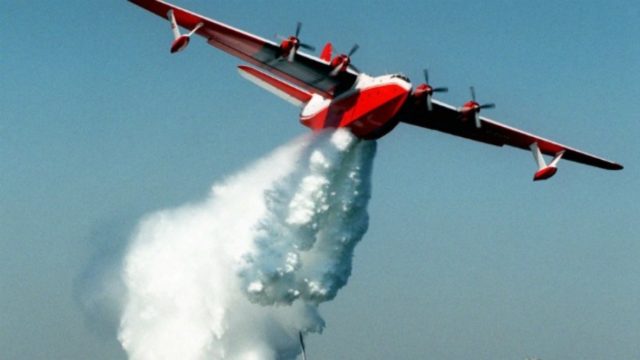In this DAKOTA HUNTER Blog, you will read the story and see the photos of the somewhat forgotten Martin PBM Mariner. A less successful forerunner of that legendary Martin Mars, which at this very moment is one of the Great Stars featuring daily low fly passes and water droppings at what is dubbed as being the biggest air show in the World, Oshkosh Air Venture 2016.
The feature photo depicts a Martin Mariner , beached for a clean up at Banana River, Florida. Surely no bad job for the boys. In this fine picture , you’ll notice the rather impressive dimensions of this aircraft , powered with only 2 radial engines Wright R-2600 ( max 1700 HP each, later upgraded to 1900 HP each). One of the major flaws in this design seems rather obvious, it was an underpowered aircraft. Later the PMB-5 version was upgraded with the use of the R-2800 engines ( max 2100 HP each). But that extra power was partly offset in the Amphibian version PBM-5A against the extra weight of the retractable tricycle landing gear. The depicted PBM-3 had an empty weight of 15 tons and a loaded weight of 25 tons. To get that weight airborne with their max 2 x 1700 HP in a rather high-drag-coefficient airframe ( by its floats and boat keel with a large frontal surface), many a Mariner pilot must have experienced hairy moments on water take offs from limited waters like lakes and rivers, due to its long runs to get airborne.
The photo above shows the return flight of 4 Martin Mariners over the Brazilian Coastline. A magnificent shot with the sunlight over the aircraft, while the Rio de Janeiro Bay in the backdrop is still shrouded in clouds. The Giant Rock behind the last aircraft is the Sugar Loaf. Right behind that is the Santos Dumont Airport in the Bay, wich was also a base for Flying Boats. Quite probably, the Martins were heading for this Station to land. In 1994, during my second Catalina Odyssey, I was on that same Airport with a Catalina PBY-5A from Plane Sailing, Duxford, UK. We made a water landing in the Bay and as we were about to take off from the water, the LH engine played up. Captain Paul Warren Wilson was able to get the airplane out of the water and land it on Terra Firma , the Santos Dumont Airport tarmac, where we found that the engine had internal damage and had to be replaced. See for more details about the Catalina also my previous blog Catalina Photo Album
The career of the Martin Mariner PBM fell in between that of the PBY-5A Catalina and the HU-16 Albatross, as it entered service in September 1940. But, while both the Catalina and Albatross became flying legends of name and fame, the Mariner failed to establish such reputation.
Allegedly due to the accident-prone design of this vastly underpowered aircraft. too large for even 2x R-2800 engines with 4 blade props in PBM-5 versions. As with the Catalina design, a tricycle landing gear was added later for an amphibian version, but the added weight and further aft CoG made this version extremely vulnerable during water landings. The type was used by the US Coast Guard, US Navy, RAF & RAAF, Argentina, Uruguay and the Dutch Naval Aviation Services (MLD). The total production of all types of the Mariner since 1940 ran well over 1300 aircraft, while the type still flew in active US service until 1955. In other countries, they soldiered on. More than 20 years in active service, not so bad. Maybe, its “widow maker” reputation was somewhat exaggerated?
In my youth, I met that Mariner during quite a few occasions. I lived in Borneo between 1950-1957 in a post-colonial life in Balikpapan with my family; my father worked as an oil exploring engineer for Shell. For a young kid like me, looking for some adventure, it was paradise with frequent flights in the DC-3 and the Catalina PBY-5A. But one day, that life came to an end. The Republic of Indonesia under President Sukarno made a claim on Dutch New Guinea, that easternmost part of the Archipelago that was kept outside the Declaration of Independence of the Free Republic in 1950. By 1955, Sukarno started his powerplay with the invasion of “Agents Provocateurs” with small boats. The Dutch Naval Aviation Services MLD had to defend New Guinea against these armed Guerilla intruders, that were also hunted by the local Papua tribes. For coastal patrols from Biak, Dutch MLD bought 15 ‘pre-owned’ Mariners from the US Navy. The reputation of “Crew killer” was at that moment a far cry, but between 1955 and 1960, MLD lost 6 of its Mariners ( or 40 %), most of them with fatalities.
The conflict went to a higher political level; Sukarno urged all Dutch Citizens to leave the country and all Shell’s refineries were nationalized. With my Dad and Mom, I left Indonesia in 1957, only to come back 32 years later to see what was left of our houses, our Pacific paradise. We started a new life in Holland, by sheer coincidence just next to the Naval Air Station Valkenburg, where some of the last MLD Mariners were stationed. The aircraft was grounded after the final accident, and the Dutch Government lost West Papua/ New Guinea to Indonesia in 1960. In the end, the purchase and Patrol flights of the Mariner over remote shores of an island on the other side of the world, it all turned out to be in vain. The ages of Colonization were over and we all had to accept that. What I remember best of that impressively looking aircraft with its Gull Wing design, were its huge dimensions, when standing parked next to the Avengers on Valkenburg. We saw them flying, and every time, I was amazed by their slow speed and climbing rate. As if a Giant Whale with wings was trying to get airborne.
The photo above shows the Mariner in full colors during the daily routine of 1940-1950’s Flying Boat operations. Always more awkward that with land-based Planes, you need the support of smaller vessels to anchor and with high swell and wind shifts, this can be a rather tricky operation with such big aircraft that rolls and yaws on the waves. The average accident rate of Sea Planes was always higher, during landings and take offs, and crews needed special training/ expertise to handle those complications correctly, especially in the prevailing primitive conditions with landings at remote lakes, rivers, and bays.
I remember from my youth in Borneo, where the Shell-operated Catalina landed in front of our house on the Mahakam River. Every time it was an effort for the pilots to clear the river from small crossing canoes and boats and to avoid driftwood and submerged tree trunks, which were hidden in the muddy waters of that crocodile infested river. No good place for even the smallest mistake on that river with a bite!
The photo above was taken near Corpus Christi, TX in 1950. This is a rather impressive take off from the water by a Martin Mariner, with a rate of climb that could only be accomplished with a Jato start (Jet Assisted Take Off) or a Rato ( Rocket Assisted Take Off). The crew must surely have felt more comfortable with those little power boosters under their bums; that gave them a short-lived push as if they flew with 4 engines.
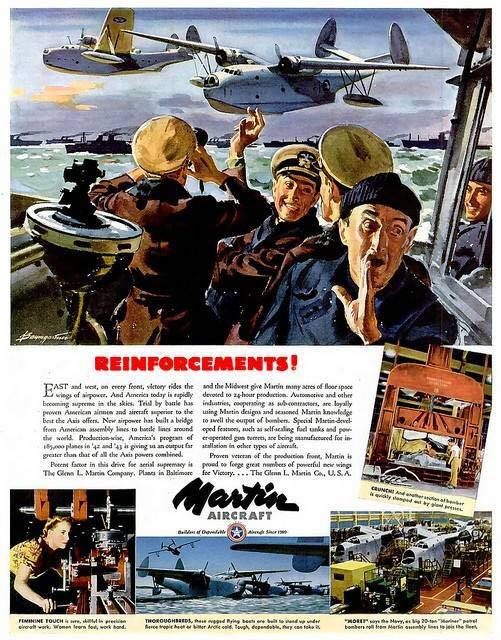
The photo above shows one of the WW II Martin Ads published in Family Magazines as “Saturday Evening Post”. “Reinforcements” came in with the Patrol Bomber made by Martin (PBM) that could carry torpedos, depth charges, and bombs, to give protection against Submarine attacks and made long distance patrols for detecting any enemy shipping. The US Navy operated special Seaplane Tenders in order to bring the big aircraft closer to the war theater. Once arrived, the Marin Mariners were hoisted by cranes over the side and they took off from the water, as you can see in this picture below of the Revell Kit Box.
The photo above depicts the USS Pine Island with 2 Martin Mariners on board. The one in the back is provided with a big radar dome on top of the fuselage, which was a major step forward in the detecting / tracking and hunting of enemy Submarines that tried to intercept convoys of warships and cargo hauling ships. That same Radar dome is better seen in the superb photo below of a Mariner that most probably had a hard water landing and took in some water. Hard working and pumping for the crews to save this aircraft from sinking!
The Martin Mariner PBM was very accident prone during water landings with a tendency for nose diving. One accident in New Guinea was survived by a Dutch soldier named Gerhard de Bruyn. He wrote that the aircraft went in for a water landing in high swell conditions. The Mariner had its nose low down and as they hit the water, the aircraft tumbled over its bow. The pilots got stuck in their mutilated cockpit and drowned with the sinking of the aircraft. He was rescued by a couple of tribal men who came in their canoes over the shark infested waters of Patipi Bay/ New Guinea.
The photo above shows another accident with a Martin Mariner in the British West Indies, May 1943. Both floats are gone, probably the reason why this aircraft is listing with the starboard wing making water. ( Photo courtesy Jim Sullivan Collection).
The predicted post-war New Era with huge Seaplanes to cross the oceans yielded high expectations. Big Flying Boat projects were developed in France (6 engine Latecoere 631, 1945), in UK (Saunders Roe SR-45 Princess Flying Boat, 1952) and the USA, there was that Hughes H-4 Hercules (or Spruce Goose, that made a short airborne hop in 1947 but never really flew). And finally, the Martin Mars JRM-1 ( see photo below), a four-engine Giant of which seven were built in 1942-43 and two are surviving until today! But, the war had brought new and improved airfields of immense sizes, that could handle the land-based Mega planes like the B-29 Superfortress. Those giant aircraft did not have to cope with the cumbersome water landings, the mooring handlings and added drag of the boat hulls, and no more worries for seawater corrosion, plus the notoriously awkward loading of heavy cargo on choppy waters.
Hence, the dream of many to see the Seaplane grow to new heights after the war, it remained a faraway illusion. Even the Amphibian as a commercial Passenger transport could barely survive the 1950’s. Beyond that point, the Seaplane survived in the niche role as a water bomber (Canadair) and as a limited size passenger transport in special venues with local commuters, tourists, and fishermen (Alaska, Vancouver, etc).
I was so lucky to make a few flights from Miami to Bimini Islands in a vintage Grumman Mallard Amphibian, operated by Chalks. But even that dream came to a sudden halt in December 2005, as one of their Mallards suffered from a wing fold due to metal fatigue and crashed just outside Miami Beach, killing all 20 people on board. That tragic accident stalled all flights of Chalks forever. (More details and photos of my Mallard and Catalina flights are to be found in my book The Dakota Hunter, see dc3dakotahunter.com )
The photo above shows the successor of the Mariner in all its glory, the Ultimate Flying Boat, the Martin Mars, of which 2 are still flying and used until recently as water bombers by Coulson, Port Alberni, B.C. Canada. I came to visit their base while one of the two aircraft was beached on the ramp at the lake for an engine overhaul. We were invited to come inside and sit in the roomy cockpit. But now, the Vancouver Island company is offering a rare opportunity to fly a Second World War aircraft described as the world’s largest water bomber. “I would say it’s like flying a museum,” said Wayne Coulson, owner of Coulson Flying Tankers. They offer a two-day course that includes time in the cockpit of the only two Martin Mars aircraft left in the world — all for a cool $25,000 USD.
Selected from my lifetime adventures and encounters with vintage aircraft, I have collected the best stories in a book of 320 pages, engagingly written and illustrated with 250 unique photos. Meet the pilots, the remote communities, the Military and the War/ Drugs Lords, that use the planes for their trades. Evidence of my 20 years of expeditions, in search of the legendary DC-3. I found them crashed, stored, abandoned, or still flying, in all states of despair, in boneyards but also in the High Andes, The Yukon, Madagascar and the Jungles of the Amazon. And in situations where the Dakota still reigns as the only transport to bring you in and out of the dense forests, the Last Frontiers of Colombia.
Come with me to see the wrecks and crashed aircraft that I visited for recovering the intact parts, and always with that indomitable curiosity and the questions that I ask since my youth years in Borneo “… and what happened here?”. It means diving into the history of the final and often fatal flight of the wrecks that make most fascinating stories.
For ordering this book, you can go directly to the Amazon page by clicking here at Ordering at Amazon The Dakota Hunter Book. For 5-star reviews of my book The Dakota Hunter, scroll down on that Amazon page. For Previews and my earlier Dakota Hunter Blogs , click here at dc3dakotahunter.com.
https://www.youtube.com/watch?v=WHLuyYFdwOw
